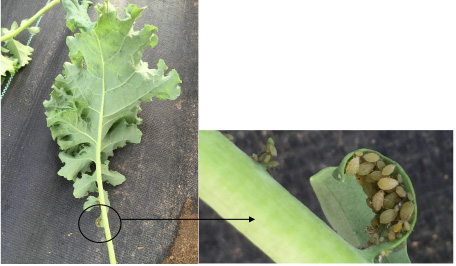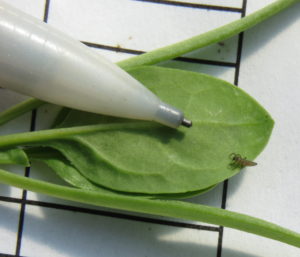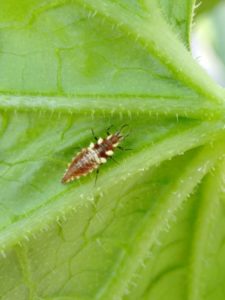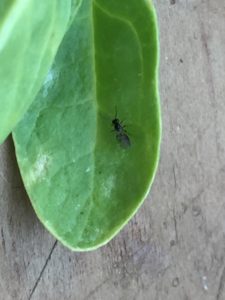As the days grow shorter and those of you who adventure into winter production begin to prepare your seed starts, keep an eye out for unwanted invaders. Pests such as thrips, mites and aphids may be on the move as our field production dwindles, and nothing is tastier than a tiny new plant! In order to increase the success of winter production, be sure that you are starting with clean plants before you tuck them away under those cozy row covers! Controlling weeds, which can serve as alternative hosts to the aphid pests, will lessen problems of re-infestation. Scout with diligence for aphids, they can be one of the most damaging and hard to control pests during the winter months in high tunnels.
The first step to managing aphids is to develop a scouting plan. Aphids reproduce clonally and develop quickly leading to very large population build-up in a short period of time. When examining plants be sure to look at the growing point and underside of leaves, where aphids prefer to colonize (Figure 1). Outbreaks commonly begin on the outer rows or the start of the row so these are places to be sure to focus your scouting efforts.
As you scout, look for those natural enemies, which can help make your job easier. They are also abundant this time of year and would love to overwinter in the comforts of your high tunnels! Lady beetles (Figure 2) have been reported as effective, offering control throughout the colder months, if you can keep them inside on the crop. In early fall green lacewing larvae (Chrysoperla carnea) (Figure 3) may be an additional option for controlling populations. Releasing eggs is not recommended at this time because the cooler temperatures increase the time to hatch, delaying control. Larvae will begin eating aphids when they are released. The cold tolerance of green lacewings has not been examined but we have conducted experiments showing that adults are active and still lay eggs at 11C (51.8˚F). Parasitoid effectiveness declines under cooler temperatures and growers have expressed concerns regarding removing aphid mummies from the vegetables and therefore are not recommended (Figure 4).



